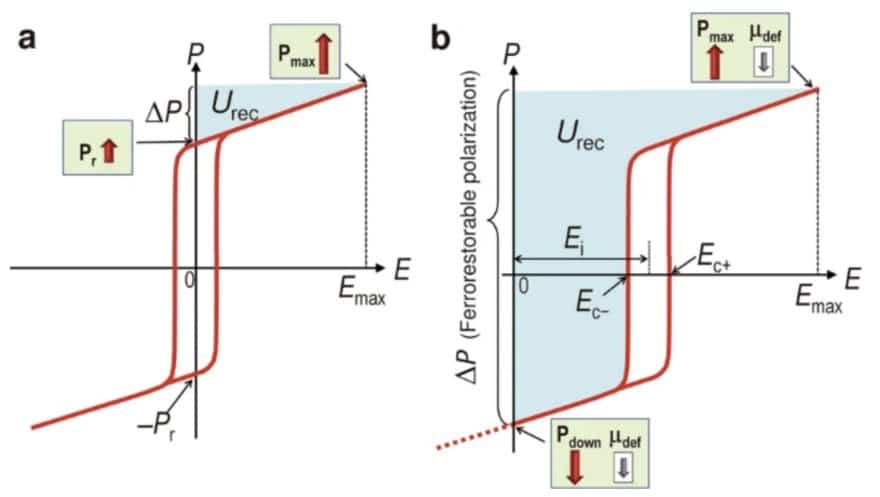Team of researchers from Kumamoto University in Japan and KYOCERA Corporation’s Monozukuri R&D Laboratory introduced its research in ferrorestorable polarization in high energy storage BaTiO3 based ceramic capacitors.
The paper Utilizing ferrorestorable polarization in energy-storage ceramic capacitors published in the journal NPG Asia Materials has provided a route toward realizing ceramic capacitors for highly efficient devices with self-powering abilities.
Abstract
A self-powered system with a long lifetime would represent an opportunity in the development of a next-generation, standalone Internet of Things. Ceramic capacitors are promising candidates for energy storage components because of their stability and fast charge/discharge capabilities. However, even the energy density of state-of-the-art capacitors needs to be increased markedly for this application.
Improving the breakdown electric field represents a potential solution, but operations at such high fields relying on unchanged dielectric permittivity sacrifice the lifetime of the capacitor to some degree. Here, we report ferrorestorable polarization engineering capable of more than doubling the effective permittivity. Our experiments and ab initio calculations demonstrate that a defect dipole composed of Cu3+ and oxygen vacancy in a prototypical ferroelectric BaTiO3 ceramic is coupled with spontaneous polarization. The resultant ferrorestorable polarization delivers an extraordinarily large effective relative permittivity, beyond 7000, with a high energy efficiency up to 89%. Our work paves the way to realizing efficient ceramic capacitors for self-powered applications.
As with any electronic component, the design of highly efficient and durable miniaturized energy storage devices relies heavily on the selection of suitable materials. In recent research, ceramics have emerged as advanced material candidates for this crucial application due to their long lifetimes and robustness.
Ferrorestorable Polarisation
Ceramic capacitors represent an advanced solution to the problems of miniaturized electronics research, but in order to be considered commercially viable components, their currently reported energy densities must be significantly improved. To improve this, studies have investigated the incorporation of polar materials such as ferroelectrics, paralectrics, and relaxors.
One solution is to improve the breakdown electric field. However, there are some challenges associated with this, as operations under high yields which utilize the principle of unchanged dielectric permittivity impact the capacitor’s useable lifetime. This therefore negatively affects the commercial viability of ceramic capacitors, and new, more highly efficient strategies must be introduced to overcome this.

Ferrorestorable polarization can significantly enhance the system’s effective permittivity possesses benefits such as stabilizing the downward polarization at zero field. Authors prepared vanadium and copper-doped BaTiO3 powders for detailed investigation of ferrostorable polarisation impact.
Results & Discussion
Important observation of the research is that the polarization properties of the prepared ceramic BaTiO3 samples by ferrorestorable engineering are not influenced by aging, regardless of the use or otherwise of pretreatments. Furthermore, Cu samples display a diverse range of properties that depend on poling pretreatment and aging, as well as Cu valence.
In summary, the paper has demonstrated the successful synthesis of ceramic samples utilizing a ferrorestorable polarization engineering approach and the categorization of their properties and characteristics. This research will serve as a relevant knowledge base for future researchers in the field of ceramic capacitors for miniaturized energy storage applications.
article reference:
Matsuo, H., Utsunomiya, M. & Noguchi, Y. Utilizing ferrorestorable polarization in energy-storage ceramic capacitors.
NPG Asia Mater 14, 80 (2022)
https://doi.org/10.1038/s41427-022-00426-z